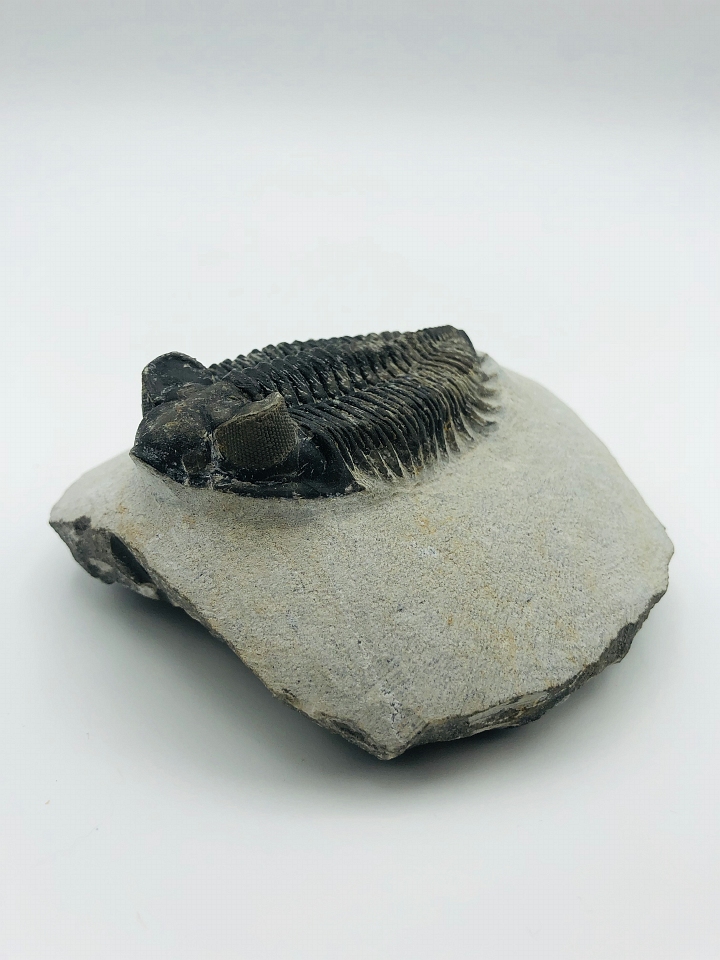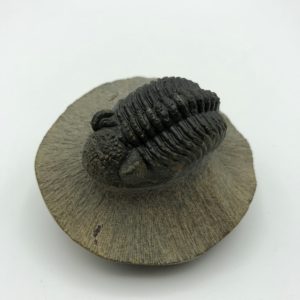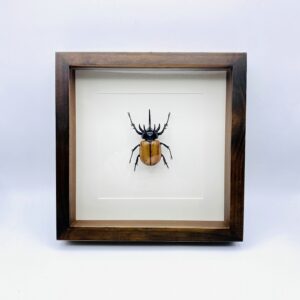Description
Coltraneia is a genus of trilobite, that lived during the upper Emsian and lower Eifelian, and has been found in Algeria, France, Germany, Morocco and Spain.
The frontal lobe of the central raised area of the headshield (or glabella) is rounded. The furrow defining the glabella is curved behind the frontal lobe. Both lobes directly behind the frontal lobe are more elevated than the lobe just in front of the occipital ring. All sighted phacopina have schizochroal eyes, but in Coltraneia these are particularly large with 13–14 lenses in each of the vertical rows (or dorsoventral file) at midlength. The front of these eyes almost touches the furrow separating the frontal from the following lobe, while the back of the eyes touch the posterior border furrow. The axis of the tailshield (or pygidium) has 13 to 15 rings, and is constricted between the 6th and 7th rings. In the pleural region to the side of the pygidial axis, 8–11 segments can be identified. The five pairs of pygidial spines (or lappets) extend from both the anterior and posterior pleural bands. These lappets are shorter than the corresponding pleural segments, narrow and pointed, more so further to the back. The terminal medial spine is so short, it almost is confluent with the lateral edge of the pygidium between the spines.















